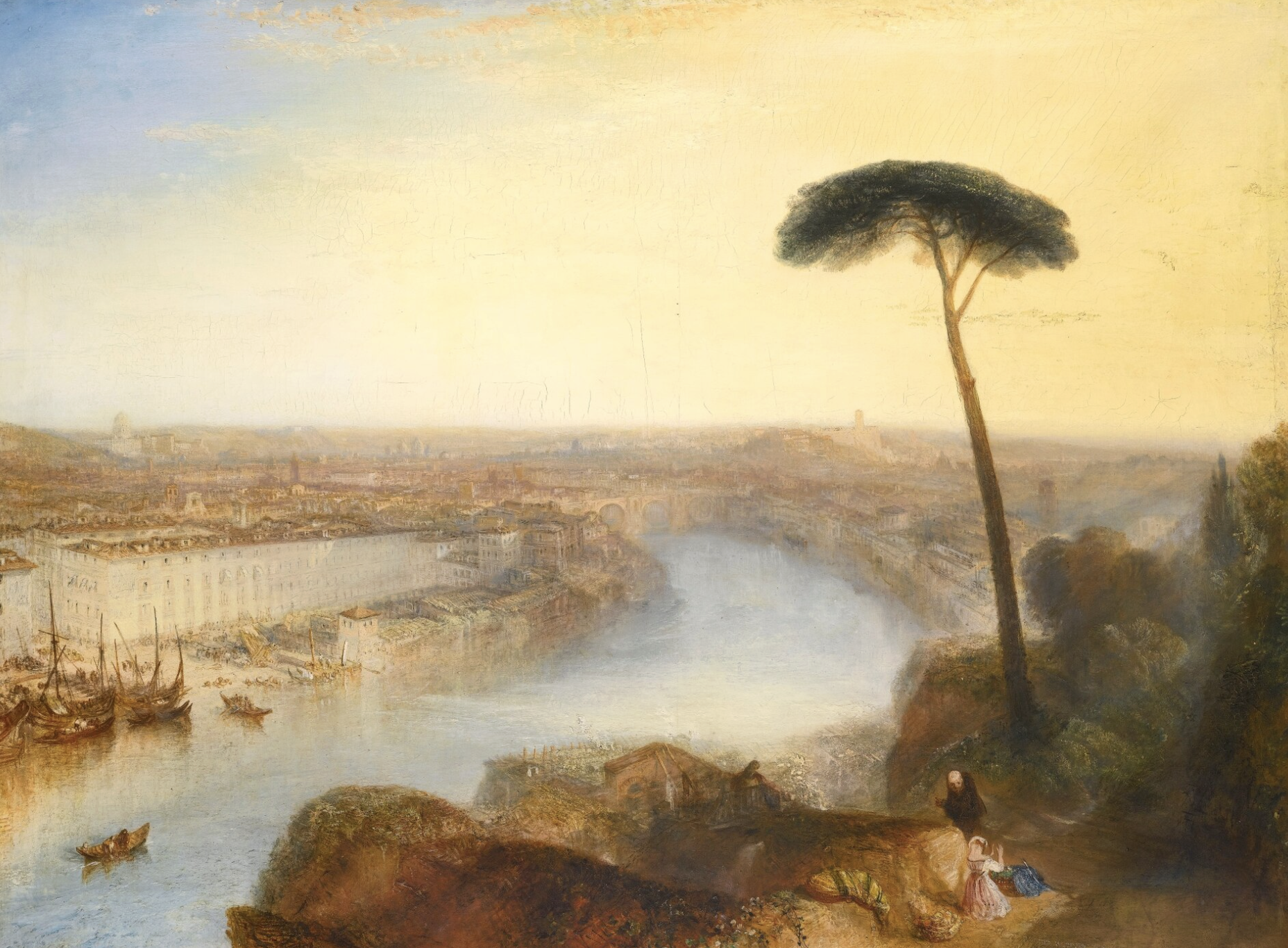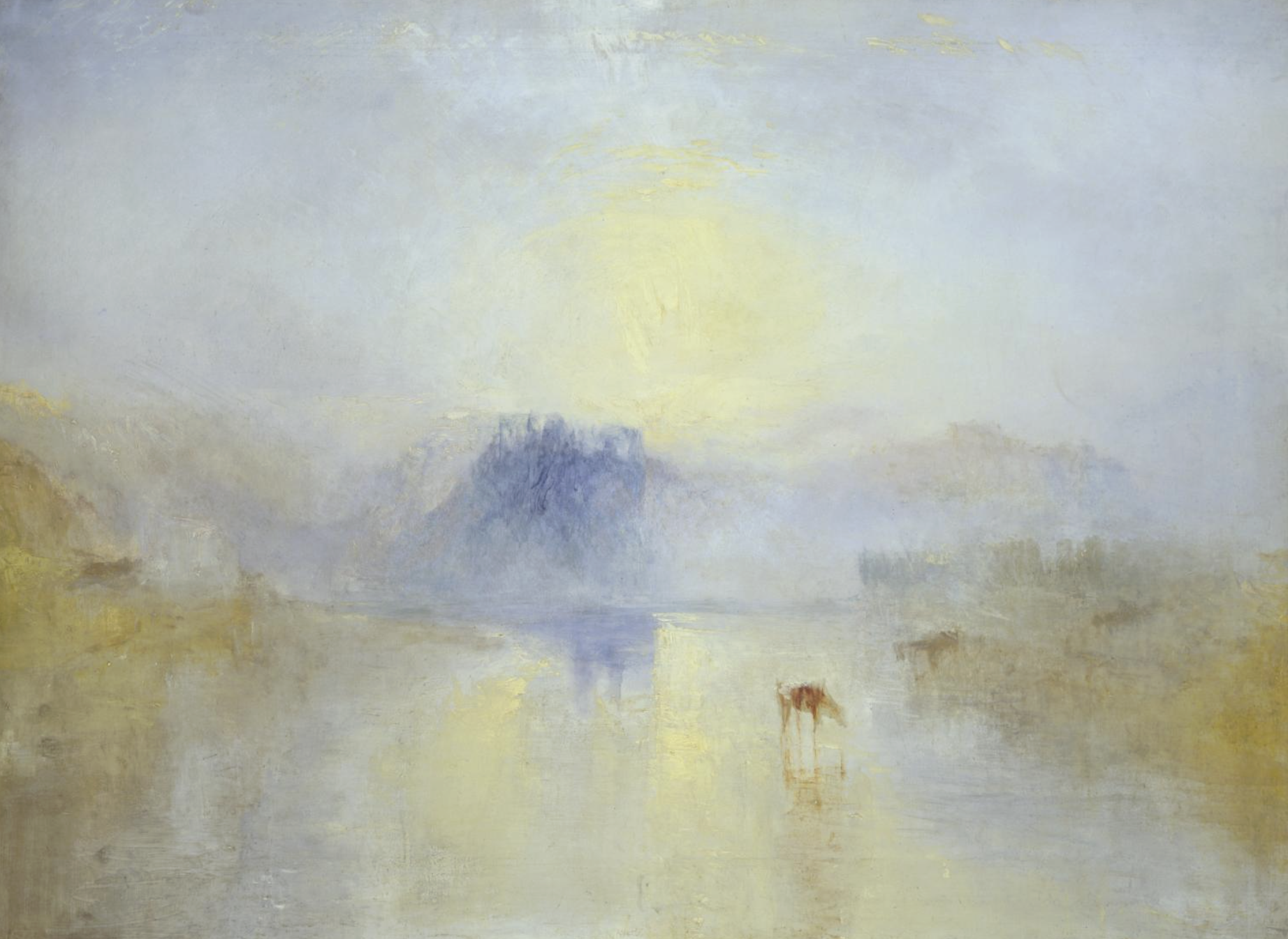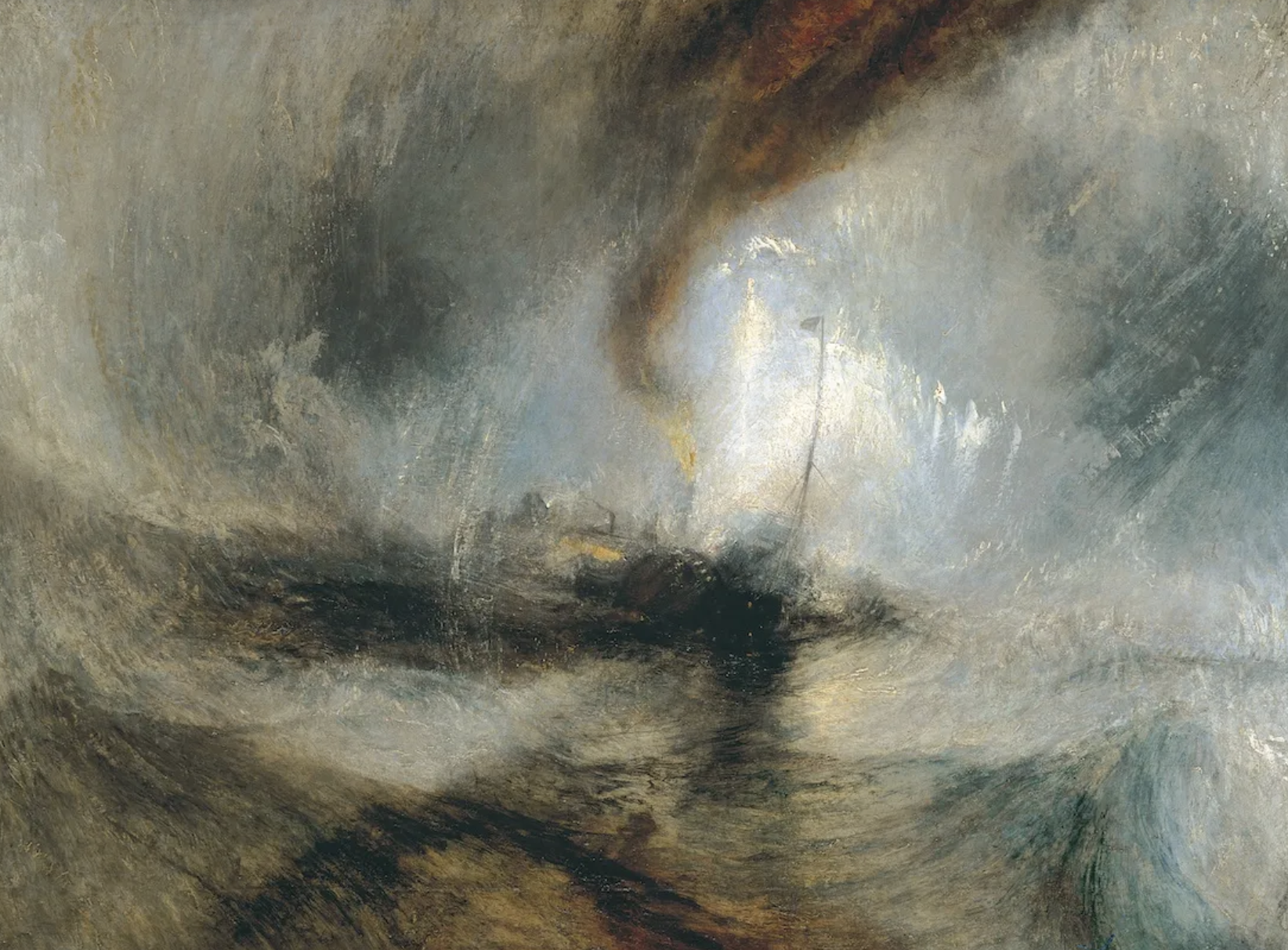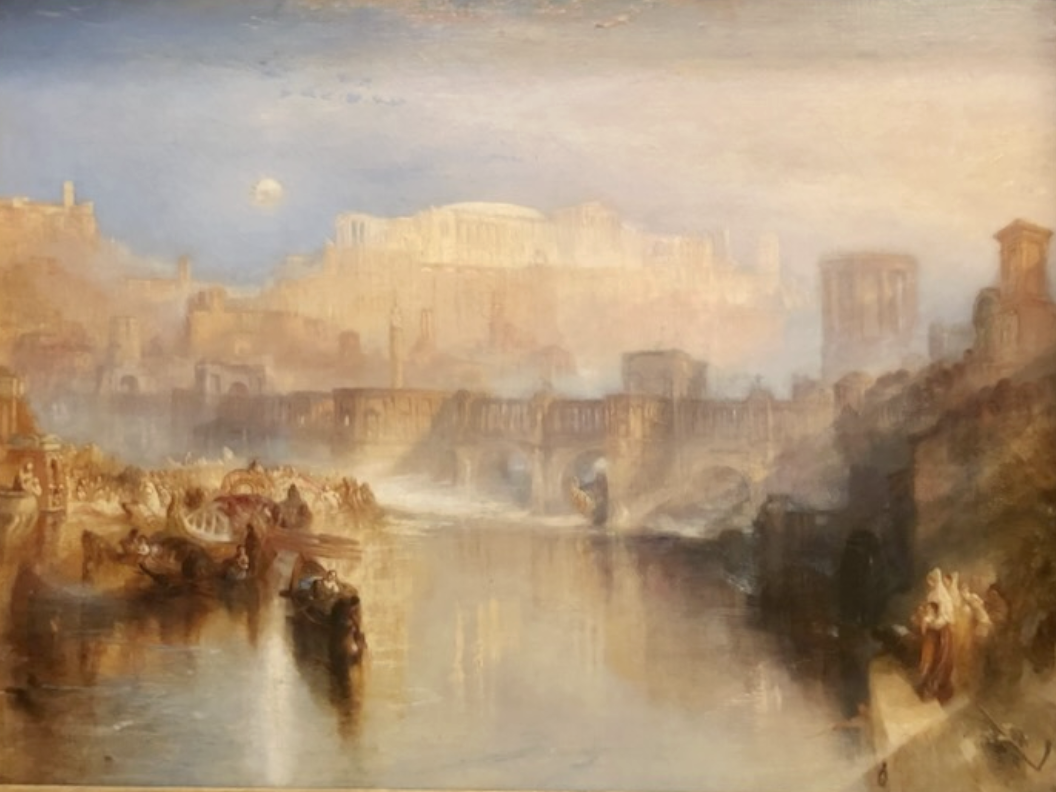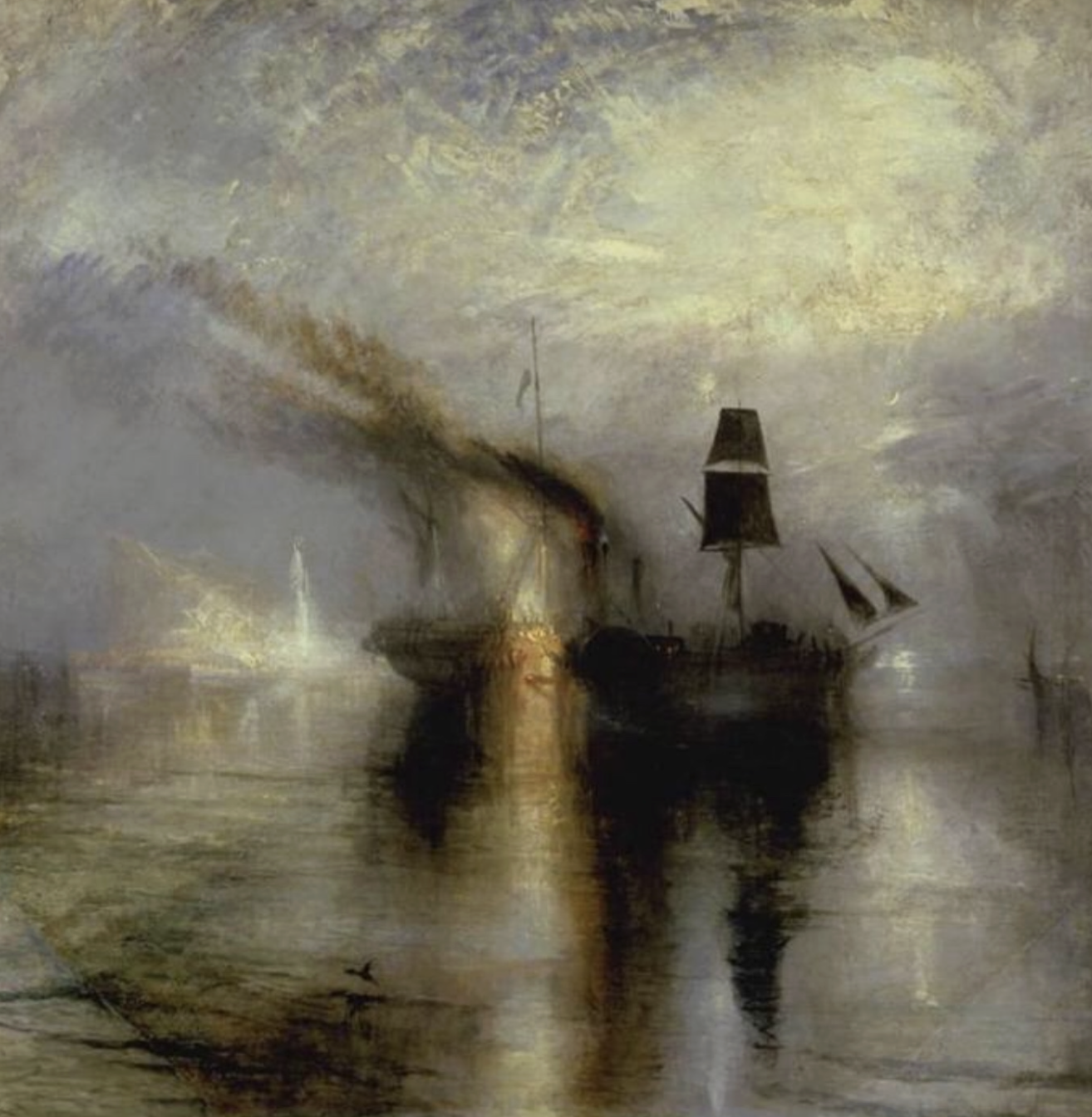“The painter of light”
My initial inspiration came from William Turner. The blending of the oils have such depth, movement and passion. Turner’s radical spirit of enquiry and his innovative approach to light, colour, and the depiction of nature.
He became known as 'the painter of light', because of his increasing interest in brilliant colours as the main constituent in his landscapes and seascapes. His works include water colours, oils and engravings.
Rain, speed and steam - The Great Western Highway 1844
his particular piece of his steam engine comes towards us as it crosses the Maidenhead Railway Bridge in the rain. Designed by Isambard Kingdom Brunel, the bridge was completed in 1838. We are looking east towards London as the train heads to the west. The exaggeratedly abrupt foreshortening of the viaduct, which our eye follows to the horizon, suggests the speed with which the train bursts into view through the rain. Turner lightly brushed in a hare roughly midway along the rail track to represent the speed of the natural world in contrast to the mechanised speed of the engine. The animal is now invisible as the paint has become transparent with age, but it can be seen in an 1859 engraving of the painting.
Turner frequently painted scenes of contemporary life and was particularly interested in industry and technology. As he often used new forms of transport, including steam trains, it is unlikely that the painting is a rejection of modernity. Instead, he saw both the train and the bridge as subjects worthy of being painted.
William Turner, was an English Romantic painter, printmaker and watercolorist. He is known for his expressive colouring, imaginative landscapes and turbulent, often violent marine paintings. His artistic style developed over his lifetime, moving away from Romanticism—bypassing the following rising style of Realism —and, instead, with his later works being a significant precursor of and presaging the later Impressionist and abstract art movements that arose in the decades after his death. He left behind more than 550 oil paintings, 2,000 watercolors, and 30,000 works on paper. He was championed by the leading English art critic John Ruskin from 1840, and is today regarded as having elevated landscape painting to an eminence rivaling history painting.



